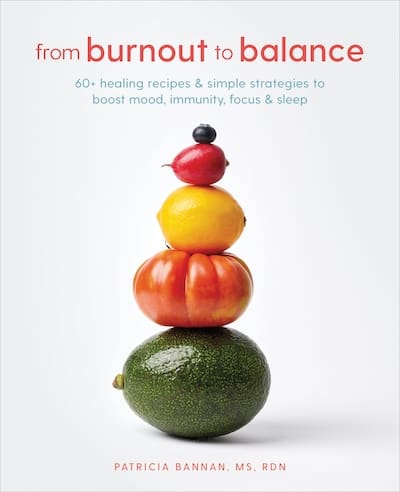Discover how micro-breaks can transform your workday, boost productivity, and improve your well-being.
As I sit here writing this blog post, I catch myself doing something I’ve helped hundreds of clients overcome – hunching over my keyboard, shoulders tense, having not moved for what feels like hours.
Even as a nutrition and health expert, I sometimes fall into the trap of “just one more email” or “just five more minutes.” Sound familiar?
It wasn’t until I developed chronic neck pain a few years ago that I realized how my non-stop work habits were affecting my health. That wake-up call led me to discover and embrace the power of micro-breaks, a practice that has not only transformed my own work routine but has become one of the most valuable tools I share with my clients.
Negative Impacts of Workplace Demands
In today’s fast-paced digital workplace, we’re all fighting against the constant pull of screens, endless notifications, and back-to-back meetings.
I see it in my practice every day—female professionals struggling with physical strain, mental fatigue, and decreased productivity, all while believing they’re being more efficient by working straight through their day.
But there’s a simple yet powerful solution that I’ve seen work wonders: micro-breaks.
What Are Micro-Breaks?

Unlike traditional breaks such as lunch hours or coffee breaks, micro-breaks are meant to be frequent, short refreshers that help prevent fatigue before it sets in.
Think of them as mini-resets for your body and mind.
The Science Behind Micro-Breaks
Research has consistently shown the benefits of taking regular short breaks during work.
A 2022 study published in PLOS ONE found that micro-breaks can increase energy levels and improve focus by up to 40%.
Another study from the Journal of Applied Psychology revealed that workers who took regular micro-breaks reported lower levels of physical discomfort and higher job satisfaction.
When we work continuously without breaks, our bodies enter a state of sustained muscle tension, and our minds experience cognitive overload.
Micro-breaks interrupt this pattern, allowing for physical recovery and mental refreshment.
Micro-Breaks vs. Traditional Breaks

Traditional Breaks:
- Usually scheduled at specific times
- Last 15-60 minutes
- Often involves leaving your workspace
- Focus on meal times or significant rest periods
Micro-Breaks:
- Taken frequently throughout the day
- Last under 5 minutes
- Can be done at your desk
- Focus on preventing fatigue and maintaining energy levels
Effective Micro-Break Activities

Physical Reset (30-60 seconds)
- Stand up and stretch your arms overhead
- Roll your shoulders and neck
- Do a few desk-friendly yoga poses
- Take a brief walk around your workspace
Visual Rest (1-2 minutes)
- Practice the 20-20-20 rule: Every 20 minutes, look at something 20 feet away for 20 seconds
- Close your eyes and practice deep breathing
- Look out a window and focus on distant objects
Mental Refresh (2-5 minutes)
- Do a brief mindfulness exercise
- Listen to one favorite song
- Practice progressive muscle relaxation
- Take a few minutes to tidy your workspace
Tips for Implementing Micro-Breaks
1. Set Regular Reminders
Use apps or computer programs that remind you to take breaks, or set simple calendar notifications every hour.
2. Start Small
Begin with three scheduled micro-breaks per day and gradually increase the frequency as it becomes habitual.
3. Make It Personal
Choose activities that you enjoy and that address your specific needs – whether that’s physical movement, mental relaxation, or both.
4. Track Your Progress
Notice how different types of micro-breaks affect your energy levels and productivity, and adjust your routine accordingly.
5. Share with Colleagues
Let your team know about your micro-break practice to avoid interruptions and perhaps inspire them to join in.
Maintaining Consistency
The key to benefiting from micro-breaks is consistency. Rather than taking longer breaks when you’re already feeling fatigued, regular micro-breaks help maintain steady energy levels throughout the day.
Think of it as similar to staying hydrated—it’s better to drink water regularly throughout the day than to wait until you’re very thirsty.
Put It Into Practice

By incorporating these brief but powerful pauses into your workday, you can enhance your focus, reduce physical strain, and maintain higher energy levels throughout the day.
Remember, taking breaks isn’t a sign of laziness—it’s a smart strategy for sustainable productivity and long-term health. Start implementing micro-breaks today, and experience the difference these small changes can make in your work life.
Ready to Take Your Wellness to the Next Level?
Learn more about my 1:1 Wellness Intelligence™️ coaching to discover personalized, science-backed strategies for improving your energy, focus, and overall well-being.
References
- Albulescu P, Macsinga I, Rusu A, Sulea C, Bodnaru A, Tulbure BT. “Give me a break!” A systematic review and meta-analysis on the efficacy of micro-breaks for increasing well-being and performance. PLOS ONE. 2022;17(8):e0272460. doi:10.1371/journal.pone.0272460
- Kim, S., Park, Y., & Headrick, L. (2018). Daily micro-breaks and job performance: General work engagement as a cross-level moderator. Journal of Applied Psychology, 103(7), 772–786. https://doi.org/10.1037/apl0000308





